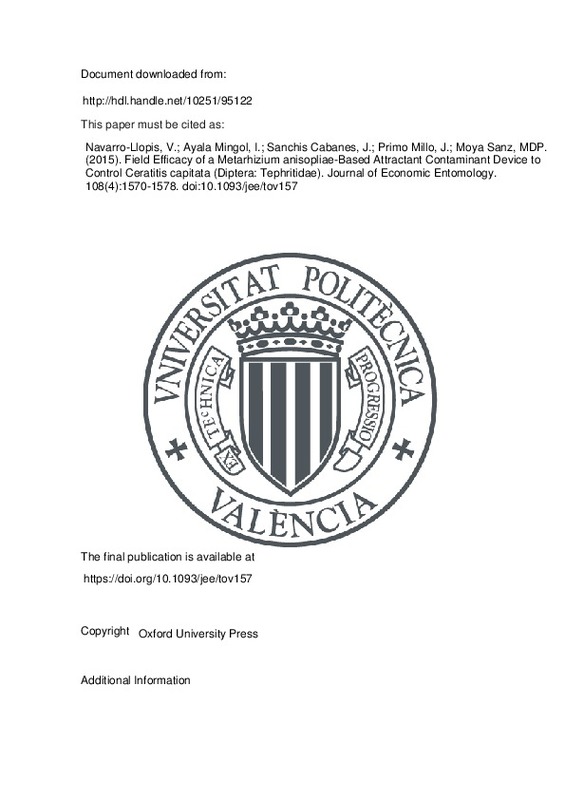JavaScript is disabled for your browser. Some features of this site may not work without it.
Buscar en RiuNet
Listar
Mi cuenta
Estadísticas
Ayuda RiuNet
Admin. UPV
Field Efficacy of a Metarhizium anisopliae-Based Attractant Contaminant Device to Control Ceratitis capitata (Diptera: Tephritidae)
Mostrar el registro completo del ítem
Navarro-Llopis, V.; Ayala Mingol, I.; Sanchis Cabanes, J.; Primo Millo, J.; Moya Sanz, MDP. (2015). Field Efficacy of a Metarhizium anisopliae-Based Attractant Contaminant Device to Control Ceratitis capitata (Diptera: Tephritidae). Journal of Economic Entomology. 108(4):1570-1578. https://doi.org/10.1093/jee/tov157
Por favor, use este identificador para citar o enlazar este ítem: http://hdl.handle.net/10251/95122
Ficheros en el ítem
Metadatos del ítem
| Título: | Field Efficacy of a Metarhizium anisopliae-Based Attractant Contaminant Device to Control Ceratitis capitata (Diptera: Tephritidae) | |
| Autor: | ||
| Entidad UPV: |
|
|
| Fecha difusión: |
|
|
| Resumen: |
[EN] Biological control of Ceratitis capitata (Wiedemann) (Diptera: Tephritidae) using entomopathogenic fungi is being studied as a viable control strategy. The efficacy of a Metarhizium anisopliae (Metschnikoff) Sorokin ...[+]
|
|
| Palabras clave: |
|
|
| Derechos de uso: | Reserva de todos los derechos | |
| Fuente: |
|
|
| DOI: |
|
|
| Editorial: |
|
|
| Versión del editor: | https://doi.org/10.1093/jee/tov157 | |
| Código del Proyecto: |
|
|
| Agradecimientos: |
We thank Hellen Warbunton for editing the manuscript. This work was partially supported by the Instituto Nacional de Investigaciones Agrarias (INIA; Proyect: RTA03-103-C6-4) and the Comision Espanola Interministerial de ...[+]
|
|
| Tipo: |
|







![[Cerrado]](/themes/UPV/images/candado.png)


